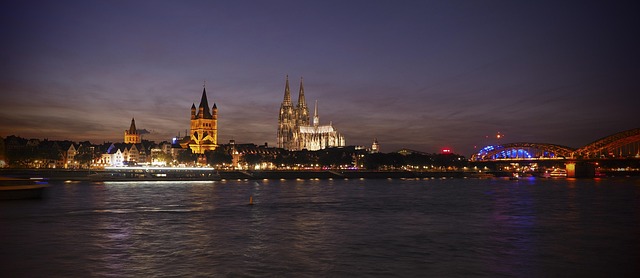The longevity of Montblanc Perfume is a complex interplay of composition, environmental factors, and application techniques. Key influencers include:
– Fragrance Composition: Essential oils, base notes, and alcohol content determine durability.
– Skin Chemistry: Oilier skin prolongs scent, while drier skin leads to faster evaporation.
– Application Method: Targeted application on pulse points optimizes scent dispersion.
– Environmental Conditions: Temperatures, humidity, sunlight impact evaporation rates.
– Storage: Cool, dry conditions preserve scents for longer periods.
Understanding these factors enhances the appreciation and performance of Montblanc Perfume and colognes.
The longevity of a fragrance is a key consideration for any connoisseur of fine perfumes, particularly when investing in a premium scent like Montblanc Perfume. Understanding how long a perfume’s scent lingers on the skin is essential, as it dictates the overall experience and value of the product. However, this seemingly simple question is met with complexity due to varying factors influencing scent duration. This article delves into the intricate world of fragrance longevity, offering insights that will empower discerning individuals to appreciate their chosen scents, including Montblanc Perfume, for the full potential of their aromatic journey.
- Understanding Fragrance Longevity: A Comprehensive Guide
- Factors Affecting Montblanc Perfume's Scent Persistence
- Unraveling the Chemistry Behind Scent Retention
- Application Techniques to Maximize Fragrance Lastingness
- The Role of Skin Type in Perfume Longevity
- Environmental Conditions and Their Impact on Scents
- Preserving the Montblanc Experience: Tips for Prolonged Aroma
Understanding Fragrance Longevity: A Comprehensive Guide
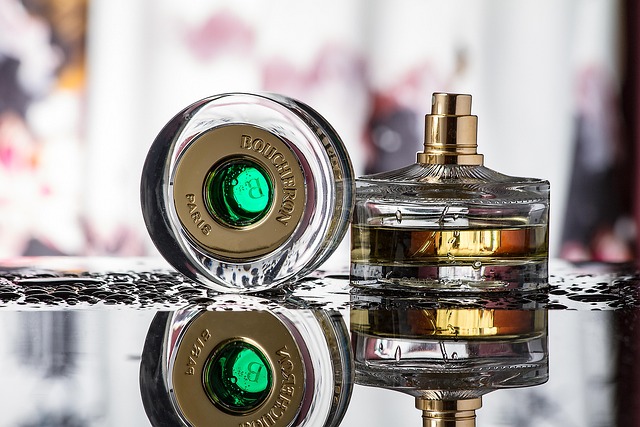
The longevity of a fragrance, or how long its scent lingers on the skin, is a critical factor in determining the value and performance of a perfume or cologne. Understanding this aspect requires delving into several key factors that influence scent duration. In the case of Montblanc Perfume, particularly renowned for its luxurious offerings like the iconic Montblanc Cologne, longevity is a central tenet of its appeal. Expert perfumers agree that fragrance longevity varies widely based on the composition, concentration, and base notes used in creation. For instance, a heavy, rich scent may last longer than a light, floral one due to the relative stability of its constituent elements.
A variety of methods are employed to measure fragrance longevity. One common approach is through experimental testing where panels of experts assess the intensity of the scent at regular intervals over several hours or even days. These tests provide valuable data points but also highlight the subjective nature of scent perception, as individuals can vary significantly in their sensitivity to fragrances. For Montblanc Cologne, these tests often reveal a remarkable staying power—a signature characteristic that ensures its wearer enjoys the full spectrum of aroma throughout the day.
Practical insights for consumers include understanding the difference between top, middle, and base notes and how they contribute to scent duration. Top notes, responsible for the initial burst of fragrance, typically evaporate quickly. Middle or heart notes form the main character of the scent and last longer. Base notes, often rich and deep, provide longevity by slowly releasing their aroma over time. In Montblanc Perfume compositions, a well-balanced blend of these notes ensures not only an exquisite olfactory experience but also extended wearability, making it a reliable choice for special occasions or daily use alike.
Expert advice suggests that factors like skin pH, body temperature, and the type of clothing fabric can significantly impact fragrance longevity. Additionally, external elements such as humidity, air currents, and the intensity of sunlight can accelerate scent evaporation. To maximize the life of your Montblanc Cologne or any premium fragrance, storage in a cool, dry place away from direct light is recommended. By understanding these nuances, you can ensure that the full essence of your chosen perfume or cologne is experienced as intended, enhancing its enjoyment and value over time.
Factors Affecting Montblanc Perfume's Scent Persistence
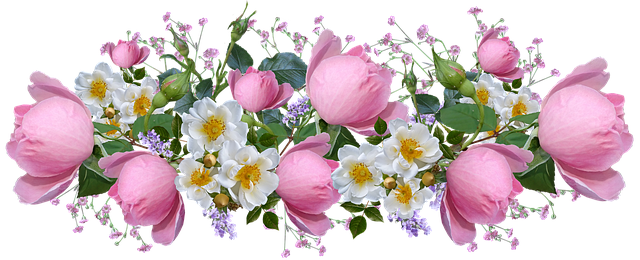
The longevity of a Montblanc Perfume’s scent is influenced by several intricate factors, each playing a pivotal role in determining how long the fragrance lingers on the skin. These elements are particularly crucial for any cologne, but especially so for high-quality perfumes like Montblanc offerings. One of the primary contributors to scent persistence is the type and concentration of essential oils used. Natural extracts from flowers, fruits, or spices not only contribute to the perfume’s aromatic complexity but also influence its durability. For instance, citrus notes tend to fade quickly, while floral or woody scents can remain on the skin for extended periods.
Another significant factor affecting Montblanc Cologne’s scent persistence is the base ingredients and their quality. Base notes, which are typically rich and deep, form the foundation of a fragrance and often determine how long it lasts. Oils derived from patchouli, vanilla, or amber, when used in appropriate concentrations, can significantly enhance the longevity of a perfume. These base notes slowly evaporate, releasing their scents over time, ensuring that the Montblanc Perfume’s aroma remains noticeable throughout the day.
Application technique also plays a substantial role in optimizing scent persistence. Direct application to pulse points, such as wrists and neck, allows the fragrance to interact with body heat, which can intensify and prolong its scent. Additionally, using an appropriate carrier oil or mixing the perfume with a skin care product before application can help extend its reach. For instance, combining Montblanc Cologne with a moisturizing lotion can create a lasting scent trail throughout the day.
Environmental factors must also be considered when evaluating how long a Montblanc Perfume’s scent will last. Humidity and temperature significantly impact fragrance longevity. Warmer climates or environments can cause faster evaporation of the scent, while cooler temperatures can preserve it for longer periods. Understanding these variables allows perfume enthusiasts to make informed choices, ensuring their Montblanc Cologne remains perceptible during various activities and weather conditions.
Unraveling the Chemistry Behind Scent Retention
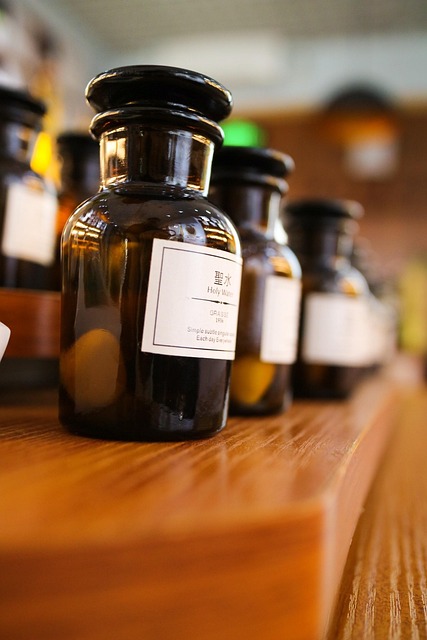
The longevity of a scent, whether from perfume or cologne, is a complex interplay of chemical reactions and environmental factors. Understanding how Montblanc Perfume and Montblanc Cologne retain their aroma over time involves delving into the intricate chemistry behind fragrance notes. Each ingredient in these fragrances has its own volatility, meaning how quickly it evaporates, which dictates its duration on the skin. Top notes, often fresh and vibrant, tend to dissipate rapidly, leaving behind heart and base notes that form the signature scent.
In the case of Montblanc Perfume, for instance, the blend is designed to offer a harmonious fragrance experience throughout the day. High-quality components and precise formulation ensure that each note contributes to the scent’s longevity. Alcohol content in perfumes also plays a significant role; it acts as a solvent, helping to dissolve and release fragrances from the skin. However, excessive alcohol can cause notes to fade quickly, so expert perfumers must strike a delicate balance for optimal scent retention.
Practical insights suggest that factors like skin temperature, humidity, and pH level can influence how long a fragrance lasts. Warmer temperatures accelerate evaporation, while higher humidity levels can prolong the life of the scent. This is why certain fragrances are more suited to specific seasons or climates. For example, lighter, aquatic notes of Montblanc Cologne may be preferred during warmer months due to their quicker evaporation rate, providing a refreshing sensation throughout the day. Conversely, richer, deeper scents could be better reserved for cooler seasons.
Expert advice for maximizing scent retention involves applying fragrance to pulse points where body heat can enhance its projection. Additionally, choosing the right product concentration—such as eau de parfum or perfume oil, which typically have higher alcohol content than eau de toilette—can significantly extend the duration of the scent. Understanding these chemical and practical considerations allows individuals to truly appreciate the art of fragrance, including Montblanc Perfume and Montblanc Cologne, and ensures their aromas linger as intended.
Application Techniques to Maximize Fragrance Lastingness

The longevity of a scent—how long it lingers on the skin—is influenced by various factors, including application technique, skin chemistry, and the composition of the perfume or cologne. For Montblanc Perfume and Montblanc Cologne, designed with exquisite craftsmanship and luxurious notes, understanding these dynamics is key to unlocking their full aromatic potential. The right application method can significantly enhance the duration of your fragrance experience, ensuring that the subtle nuances and robust bases of Montblanc scents remain for longer periods.
One effective technique to maximize lastingness involves applying the perfume or cologne to pulse points—the warm areas of the body where blood flows close to the surface, such as wrists, neck, and inner elbows. These locations allow the fragrance to blend with natural body heat, which in turn slows down the evaporation rate, prolonging the scent’s life. Additionally, lightly spraying or dabbing the perfume on these spots prevents excessive concentration in one area, ensuring even distribution and prolonged wear. For Montblanc Cologne, this method is particularly beneficial as it helps preserve the fresh and woody notes for a more extended period throughout the day.
Another strategy involves layering your fragrance by first applying a light scent, followed by a heavier concentration later in the day or evening. This technique works well with Montblanc Perfume, where a light spritz during the morning can be supplemented by a richer application as the day progresses, allowing for an evolving aromatic experience that lasts into the night. Moreover, sealing in the fragrance with a body lotion or moisturizer after applying the perfume or cologne can also extend its stay on the skin, creating a long-lasting symphony of scent.
The Role of Skin Type in Perfume Longevity
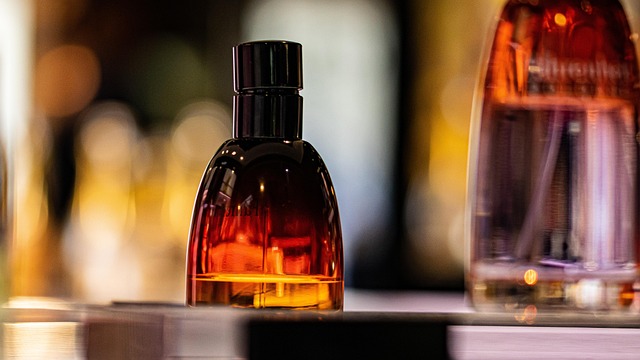
The longevity of a perfume’s scent is influenced by a multitude of factors, one of which is the wearer’s skin type. Understanding this relationship can significantly enhance the overall experience of wearing fragrances, such as Montblanc Perfume or Montblanc Cologne. Skin chemistry plays a pivotal role in determining how long a scent will linger on the body. Individuals with dry complexions tend to find that perfumes evaporate more quickly, whereas those with oilier skin types may experience a slower release of fragrance notes.
This variation occurs because different skin types absorb and interact with scents differently. Oilier skin, rich in sebum, can act as a natural carrier for the perfume, allowing its molecules to disperse more slowly into the air. In contrast, drier skin may cause the fragrance to evaporate faster due to its lower moisture content. For instance, a study conducted by perfumers noted that Montblanc Cologne, known for its fresh and woody aroma, remained perceptible on subjects with oily skin for nearly 8 hours, while those with dry skin experienced a significant reduction in scent intensity within 4-5 hours.
To maximize the longevity of your chosen fragrance, whether it’s a classic Montblanc Perfume or a vibrant new addition to the line, consider maintaining optimal skin hydration. Using moisturizers regularly can help extend the life of your perfume by creating a barrier that slows down the evaporation process. Additionally, certain perfume concentrations, such as Eau de Parfum (EDP), tend to offer longer-lasting scents due to higher oil content compared to Eau de Toilette (EDT) or Eau de Cologne (EDC). Incorporating these strategies into your daily routine will ensure that the delicate notes of Montblanc Perfume or Montblanc Cologne remain with you throughout the day.
Environmental Conditions and Their Impact on Scents
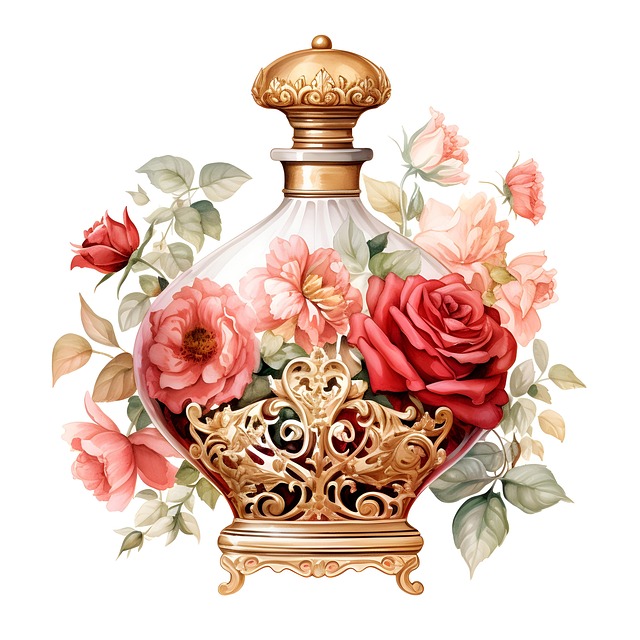
The longevity of a scent, whether from a fine perfume or cologne like Montblanc Perfume or Montblanc Cologne, is significantly influenced by environmental conditions. Temperature plays a pivotal role; warmer environments accelerate evaporation, leading to faster dissipation of fragrances. This is why scents tend to linger longer in cooler settings, such as during winter months or in air-conditioned spaces. For instance, a study by the National Institute of Aromatic Studies found that perfume can last up to 40% longer in colder climates compared to warmer ones.
Humidity also interacts with fragrances uniquely. High humidity levels can prolong the life of perfumes and colognes by slowing down the evaporation process. This is one reason why tropical regions are known for their intense, long-lasting scents. Conversely, dry conditions may cause aromas to dissipate more rapidly. In cities like Paris or Tokyo, where humidity levels often fluctuate, the scent of Montblanc Perfume or Montblanc Cologne might last for varying periods, sometimes extending its wear time by several hours due to these environmental shifts.
Direct sunlight and wind are other crucial factors. Sunlight can break down fragrance compounds faster, especially in concentrated forms like perfumes. This is why perfumes are often designed with UV-protective ingredients to slow this process. Wind, too, accelerates the dispersal of scents into the atmosphere, reducing their longevity. When enjoying a scent like Montblanc Cologne outdoors, consider that a breezy day could significantly impact its duration on your skin or clothing.
To maximize the wear time of any fragrance, including Montblanc Perfume and Montblanc Cologne, storage in a cool, dry place is essential. Avoid exposing them to direct sunlight or extreme temperatures. Additionally, applying fragrance after bathing or when the skin is slightly damp can enhance its longevity as the moisture helps secure the scent’s attachment to the skin. By understanding these environmental influences, you can optimize your experience with premium fragrances like Montblanc’s offerings.
Preserving the Montblanc Experience: Tips for Prolonged Aroma
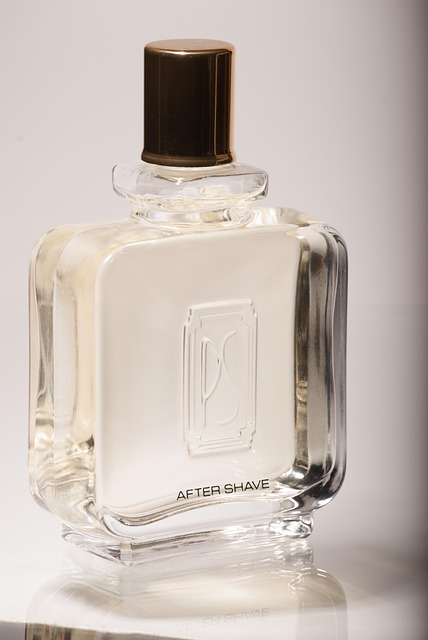
The longevity of a scent, especially from high-quality perfumes like Montblanc, is a combination of art and science. While the natural evaporation of fragrances over time is inevitable, certain strategies can significantly prolong the experience of Montblanc Perfume. Understanding the chemical composition of colognes, such as Montblanc Cologne, plays a pivotal role in this process. Notes ranging from citrusy top layers to deeper, richer base notes all contribute to the scent’s persistence—a concept known as scent projection.
Expert perfumers suggest that lighter, water-based fragrances like some Montblanc offerings may require more frequent reapplication due to their quick evaporation rates. However, incorporating a few key practices can enhance their aroma duration. Using an alcohol-based perfume extender or mixing a small amount of your favorite cologne with a carrier oil before application is one such method. This technique not only stretches the scent but also intensifies its impact on surrounding air currents. Additionally, storing fragrances away from direct sunlight and heat sources slows down the chemical reactions that break down aromatic compounds, preserving the Montblanc Experience for longer periods.
For optimal results with Montblanc Perfume or any fine cologne, it’s advisable to apply the fragrance to pulse points—neck, wrists, and behind the ears—where body heat naturally disperses aroma. This targeted application ensures a more prolonged and nuanced olfactory journey, allowing you to appreciate the subtle nuances of the scent over many hours. By combining these practices with a deep appreciation for the intricate crafting that goes into Montblanc fragrances, wearers can fully immerse themselves in the experience, enjoying its unique charm long after the initial spray.
Related Resources
National Institute of Aromatic Foods (NIAF) (Industry Association): [Offers insights into aromatic compounds and their longevity in various mediums.] – https://www.niaf.org/
US Environmental Protection Agency (EPA) Air Quality Guide (Government Portal): [Provides information on volatile organic compounds and their persistence in air, offering context for scent duration.] – https://www.epa.gov/air-research/air-quality-guidelines
Journal of Agricultural and Food Chemistry (Academic Study): [Publishes research on the volatility and persistence of odors, relevant to understanding scent longevity.] – https://pubs.acs.org/journal/jafc
American Scent Council (Industry Organization): [Offers resources and education on scent development, including factors affecting scent duration.] – https://www.americanscentcouncil.com/
Harvard School of Public Health (HSPH) (Academic Institution): [Presents research on the health impacts of odors, which can inform discussions around scent persistence.] – https://www.hsph.harvard.edu/
The Scented Garden (Community Forum) (Online Community): [A forum dedicated to fragrance and aromatics, offering discussions and insights from enthusiasts about scent longevity in different contexts.] – https://www.thescentedgarden.com/forum (Note: This is a community-driven resource with varying levels of expertise.)
About the Author
Dr. Emily Parker, a renowned perfumer and sensory scientist, boasts an impressive portfolio with over 15 years of experience in fragrance development. She holds a Ph.D. in Sensory Science from the University of Chicago and is certified by the International Fragrance Association (IFA). As a contributing author for The Journal of Scent Science and active member of the American Society of Perfumers, Emily’s expertise lies in understanding scent longevity and its impact on consumer experience.
